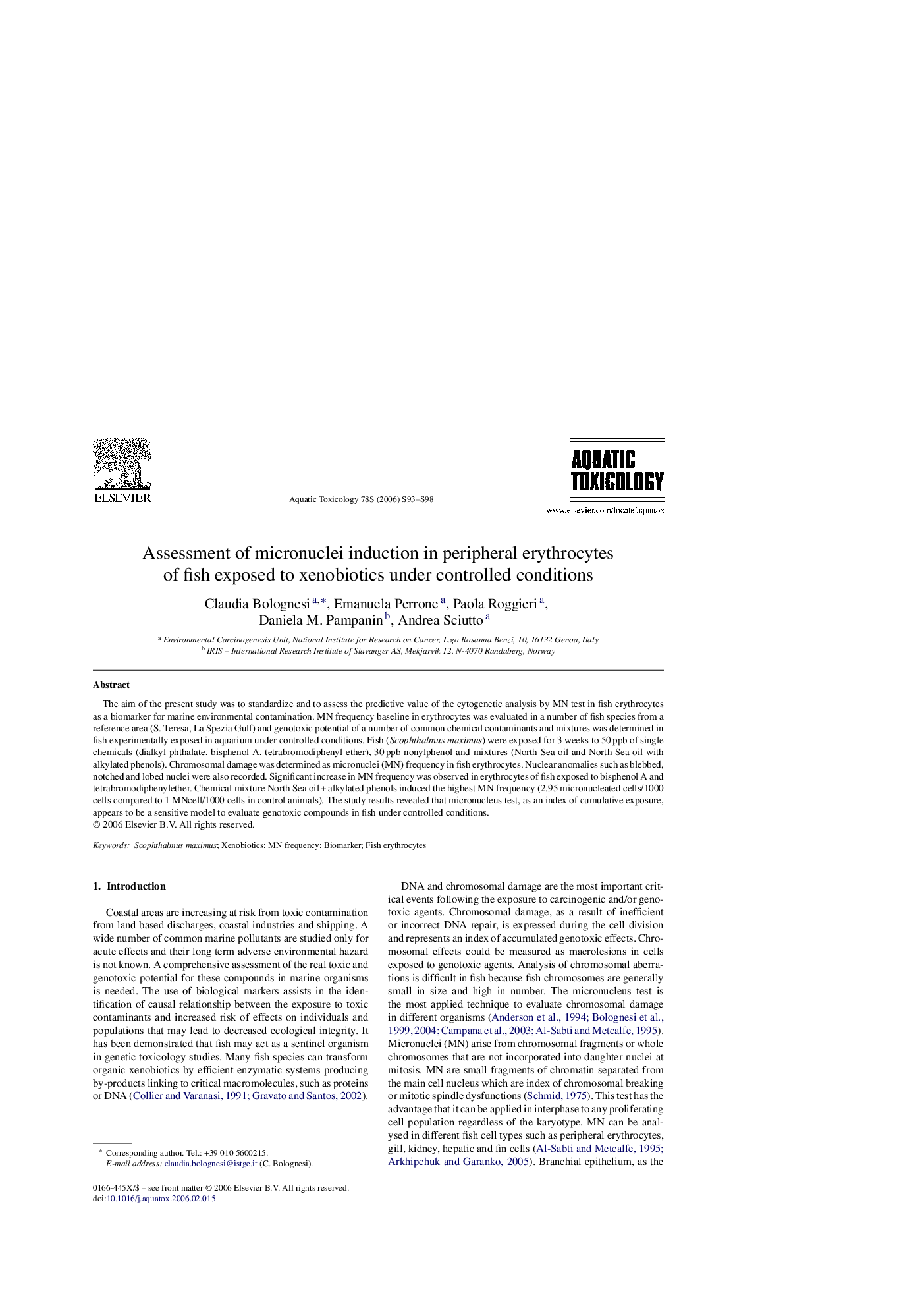| Article ID | Journal | Published Year | Pages | File Type |
|---|---|---|---|---|
| 4531349 | Aquatic Toxicology | 2006 | 6 Pages |
The aim of the present study was to standardize and to assess the predictive value of the cytogenetic analysis by MN test in fish erythrocytes as a biomarker for marine environmental contamination. MN frequency baseline in erythrocytes was evaluated in a number of fish species from a reference area (S. Teresa, La Spezia Gulf) and genotoxic potential of a number of common chemical contaminants and mixtures was determined in fish experimentally exposed in aquarium under controlled conditions. Fish (Scophthalmus maximus) were exposed for 3 weeks to 50 ppb of single chemicals (dialkyl phthalate, bisphenol A, tetrabromodiphenyl ether), 30 ppb nonylphenol and mixtures (North Sea oil and North Sea oil with alkylated phenols). Chromosomal damage was determined as micronuclei (MN) frequency in fish erythrocytes. Nuclear anomalies such as blebbed, notched and lobed nuclei were also recorded. Significant increase in MN frequency was observed in erythrocytes of fish exposed to bisphenol A and tetrabromodiphenylether. Chemical mixture North Sea oil + alkylated phenols induced the highest MN frequency (2.95 micronucleated cells/1000 cells compared to 1 MNcell/1000 cells in control animals). The study results revealed that micronucleus test, as an index of cumulative exposure, appears to be a sensitive model to evaluate genotoxic compounds in fish under controlled conditions.
